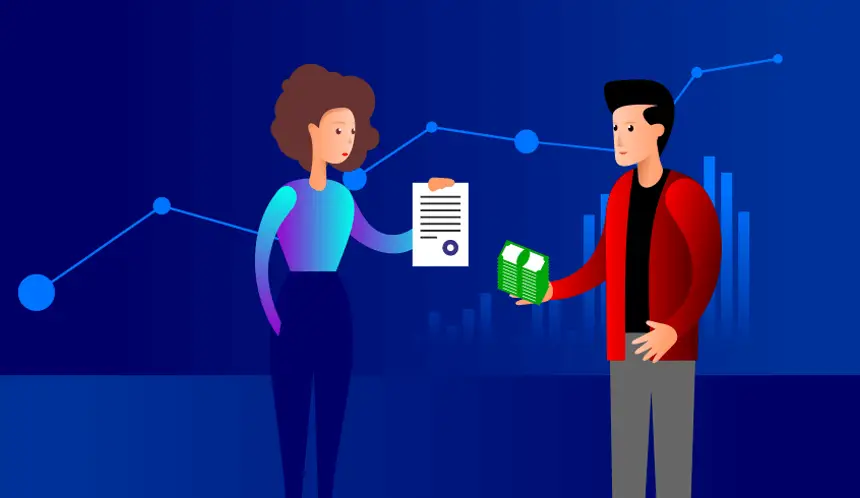The history of futures trading on the exchange dates back to the 19th century. The first contracts were concluded to ensure the delivery of agricultural products. This became an important tool for protection against seasonal price fluctuations. This approach allowed farmers and investors to reduce risks and stabilize incomes. Since the beginning of the 20th century, contracts have undergone significant changes: expanding to work with commodities, currencies, stocks, bonds, and even crypto. Today, futures trading on the exchange is one of the key segments of the financial market with volumes exceeding 10 million units per day on leading platforms such as CME.
## Main Parameters and Specifications of Futures Contracts
Futures trading on the exchange is based on standardized contracts, the characteristics of which are clearly defined by the platform. Parameters:
1. Underlying asset. Futures can be based on stocks, commodities, currencies, stock indices, or cryptocurrencies. For example, a standard oil contract includes 1000 barrels, for gold – 100 troy ounces, and for currencies – 125,000 euros.
2. Exercise price (strike). The amount at which the contract will be executed at expiration. This price is fixed at the time of contract conclusion and plays a key role in assessing future profitability.
3. Expiration date. The final term of the contract, after which the transaction is either executed or closed out in a cash settlement. Dates are known in advance and published on the exchange’s website.
4. Minimum price increment. The maximum threshold for changing the value of a futures contract, for example, for oil deals is $0.01.
5. Margin. The deposit that is blocked in the trader’s account when opening a position. The margin size varies from 10 to 40% of the full contract value and depends on the volatility of the underlying asset.
6. Variation margin. The difference between the current and settlement price of the contract, which is calculated daily depending on the market price changes.
## Mechanism of Futures Trading on the Exchange
Trading futures contracts on the exchange takes place through specialized platforms and brokerage companies. The process involves specific steps, which we will discuss further.
### Account Opening and Platform Selection
To start, it is necessary to open a trading account with a licensed broker. The choice of platform plays a crucial role: low commissions, order execution speed, and a user-friendly interface are important. Reliable brokers such as Interactive Brokers, Saxo Bank, or local leading companies offer quality conditions for trading futures on the exchange.
### Deal Execution
After opening an account, the trader selects a specific futures contract from the catalog. Enters the deal parameters: number of lots, direction (long or short), and margin size. After confirming the contract, the broker blocks the amount of margin on the account, and the platform starts daily variation margin calculations.
### Position Management
Trading futures on the exchange requires active position management. Traders monitor price changes using technical analysis tools such as RSI, MACD, and support/resistance levels. Regular adjustment of indicators, setting stop-loss orders, and using option strategies help minimize risks.
### Expiration and Deal Closure
Upon the expiration date of the futures contract, the transaction is settled. In the case of cash-settled contracts, clearing is carried out, and the difference between the opening and closing prices is recorded as profit or loss. As for physical delivery futures, the exchange organizes the delivery of the underlying asset. Managing the expiration process requires attention to detail and knowledge of platform rules to avoid unnecessary costs and unforeseen situations.
## Trading Strategies for Futures on the Exchange
Each method is suitable for different types of investors. Let’s consider key strategies.
### Hedging
Hedging allows protecting a portfolio from adverse price changes in the underlying asset. The strategy involves simultaneously opening positions in the underlying asset and corresponding futures. For example, an investor owning shares may sell an index contract to lock in profits in case of a decrease in stock prices.
### Scalping
A method for those who prefer short-term trades. Traders enter into multiple contracts during one trading day, extracting profits from minimal price fluctuations. Scalping requires high-speed order execution and minimal commissions. Using technical indicators and volume analysis helps determine optimal entry and exit points.
### Trading with Leverage
Futures trading on the exchange allows using leverage to increase the potential profitability of a trade. Applying leverage ratios from 1:5 to 1:10 provides the opportunity to manage large positions with relatively small capital. It is important to maintain discipline and strictly control risks, as increased profits come with higher potential losses. Proper margin management and the use of stop-loss orders are key to success.
### Option Strategies
Options on futures contracts allow creating flexible trading strategies. Investors can use them for risk hedging or speculative trading. Combining options and futures enables forming complex tactics that minimize losses and provide additional income.
### Long-Term Positions
The strategy of holding futures positions for the long term is suitable for institutional investors and those confident in the market trend. This approach requires careful analysis of the fundamental indicators of underlying assets and economic forecasts. Long-term positions help minimize the impact of short-term fluctuations and ensure stable capital growth. Regular portfolio review and position adjustments help maintain strategy stability.
## Practical Tips and Recommendations for Traders
For successful futures trading on the exchange, it is important not only to know the theory but also to apply practical tips based on real data and expert experience. We recommend:
1. Market analysis. Regularly use analytical platforms such as TradingView, Bloomberg, or Reuters to monitor quotes, transaction volumes, and price changes.
2. Use risk management. Set stop-loss orders, limit position size, and apply leverage only with sufficient experience.
3. Test strategies. Use demo accounts and simulators to test selected trading methods before real trades.
4. Learn and improve. Constantly study new analysis methods, strategies, and trading tools. Courses, webinars, and literature will help stay up to date with the latest trends.
5. Choose a reliable broker. Select brokerage companies with low commissions, fast order execution, and user-friendly platforms.
6. Regularly review the portfolio. Analyze the effectiveness of open positions, adjust the approach based on market changes, and update data models for calculating variation margin and margin.
## Conclusion
Futures trading on the exchange is a powerful tool for generating income both for short-term speculation and long-term risk hedging. Detailed analysis of contract parameters, practical application of strategies, and the use of modern analytical tools will help ensure high profitability.
 en
en  ru
ru  de
de  ar
ar  es
es  nl
nl  hi
hi  fr
fr  it
it  pt
pt  el
el 



